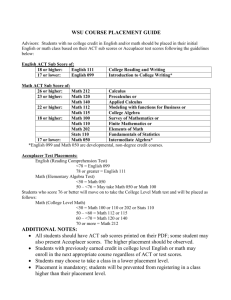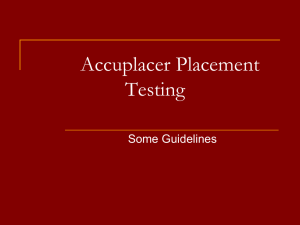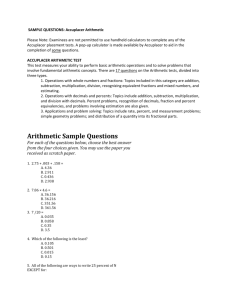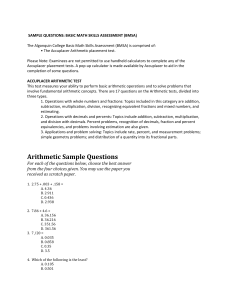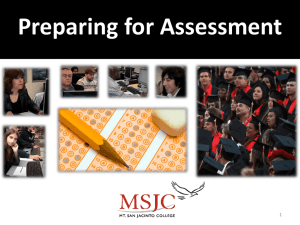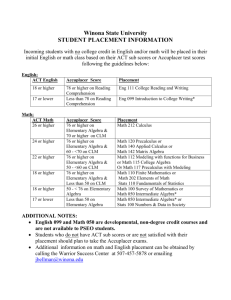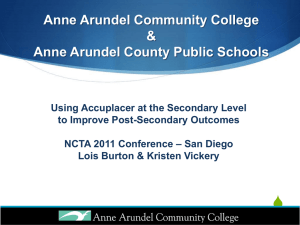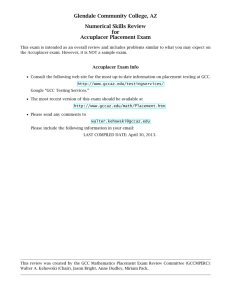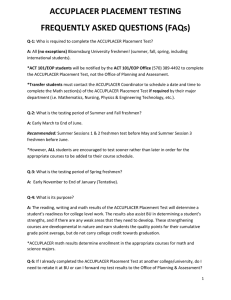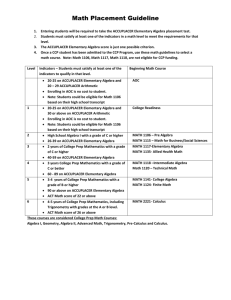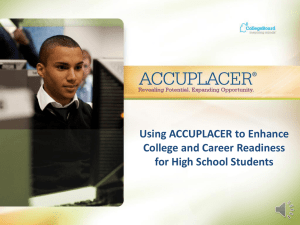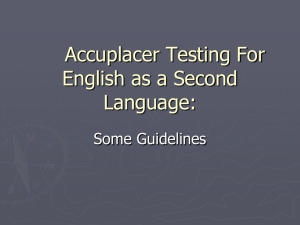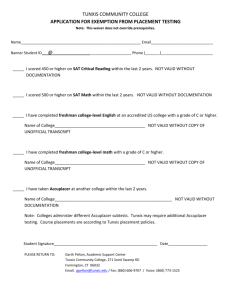minutes - OCM Boces
advertisement
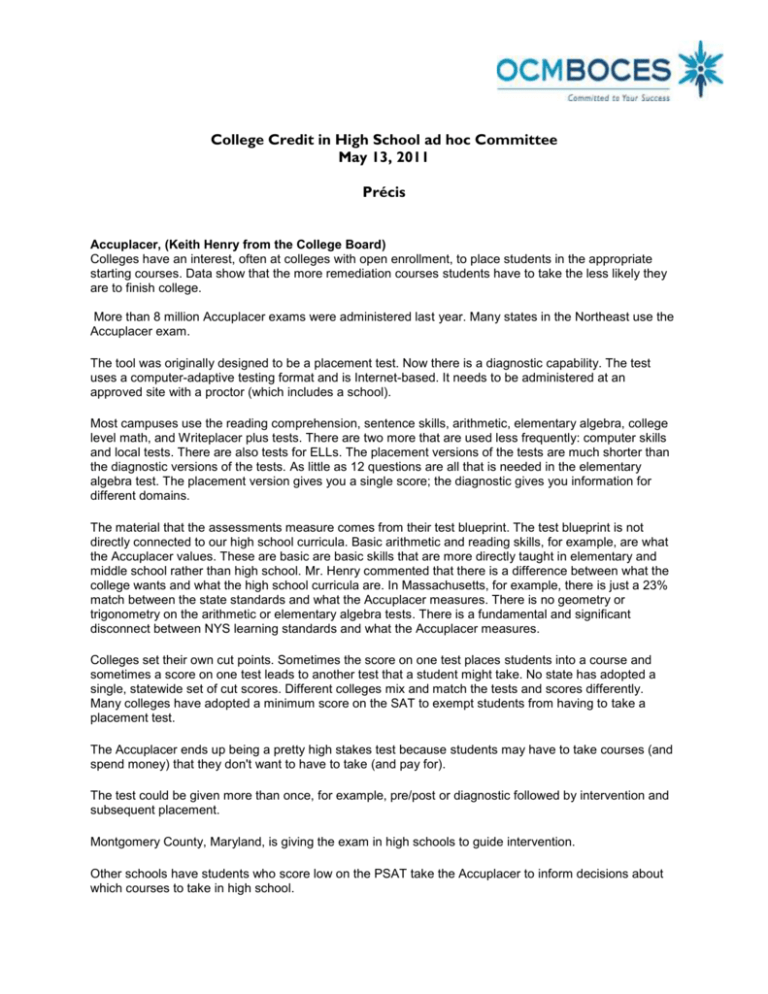
College Credit in High School ad hoc Committee May 13, 2011 Précis Accuplacer, (Keith Henry from the College Board) Colleges have an interest, often at colleges with open enrollment, to place students in the appropriate starting courses. Data show that the more remediation courses students have to take the less likely they are to finish college. More than 8 million Accuplacer exams were administered last year. Many states in the Northeast use the Accuplacer exam. The tool was originally designed to be a placement test. Now there is a diagnostic capability. The test uses a computer-adaptive testing format and is Internet-based. It needs to be administered at an approved site with a proctor (which includes a school). Most campuses use the reading comprehension, sentence skills, arithmetic, elementary algebra, college level math, and Writeplacer plus tests. There are two more that are used less frequently: computer skills and local tests. There are also tests for ELLs. The placement versions of the tests are much shorter than the diagnostic versions of the tests. As little as 12 questions are all that is needed in the elementary algebra test. The placement version gives you a single score; the diagnostic gives you information for different domains. The material that the assessments measure comes from their test blueprint. The test blueprint is not directly connected to our high school curricula. Basic arithmetic and reading skills, for example, are what the Accuplacer values. These are basic are basic skills that are more directly taught in elementary and middle school rather than high school. Mr. Henry commented that there is a difference between what the college wants and what the high school curricula are. In Massachusetts, for example, there is just a 23% match between the state standards and what the Accuplacer measures. There is no geometry or trigonometry on the arithmetic or elementary algebra tests. There is a fundamental and significant disconnect between NYS learning standards and what the Accuplacer measures. Colleges set their own cut points. Sometimes the score on one test places students into a course and sometimes a score on one test leads to another test that a student might take. No state has adopted a single, statewide set of cut scores. Different colleges mix and match the tests and scores differently. Many colleges have adopted a minimum score on the SAT to exempt students from having to take a placement test. The Accuplacer ends up being a pretty high stakes test because students may have to take courses (and spend money) that they don't want to have to take (and pay for). The test could be given more than once, for example, pre/post or diagnostic followed by intervention and subsequent placement. Montgomery County, Maryland, is giving the exam in high schools to guide intervention. Other schools have students who score low on the PSAT take the Accuplacer to inform decisions about which courses to take in high school. There is a group purchasing price and there might be a possibility for BOCES purchasing. You purchase a number of unit's and then you use those units with students as they test. How much does it cost? It is sold in terms of test units. Placement tests "cost" one unit; diagnostic versions "cost" more units. When the proctor logs in she/he chooses the test of the menu, those units are deducted from your balance. The standard cost is $2.10 per unit. College Board member prices are $1.95 per unit. State-approved costs are $1.75. It might be possible for the BOCES to purchase units that districts would draw from or use. Committee members saw two possible applications for Accuplacer. One is for placement and the other is for intervention preassessment. OCC course approval update: LaFayette got two history courses approved. Accounting 101 rejections from TC3 occurred at two districts. In one case, the taking of an accounting course by the teacher might be enough to gain approval. So far, Cazenovia has received approval for 14 new course offerings through TC3! Yes, 14! AP Reports Matt Zarro distributed the latest reports from the AP and SAT tests. Districts who were not in attendance at the meeting will receive their report via interoffice mail in the care of their superintendent. AP Conference Plans have been made for an AP conference on November 7th here at BOCES. We didn't want to do it on a conference day or on a Saturday; November 7th is the date. Jeff will be sending out a quick survey asking which course we want to provide training for on that day. BOCES will pay The College Board and, in turn, bill you through the school improvement COSER, thus making costs and subs aidable.
